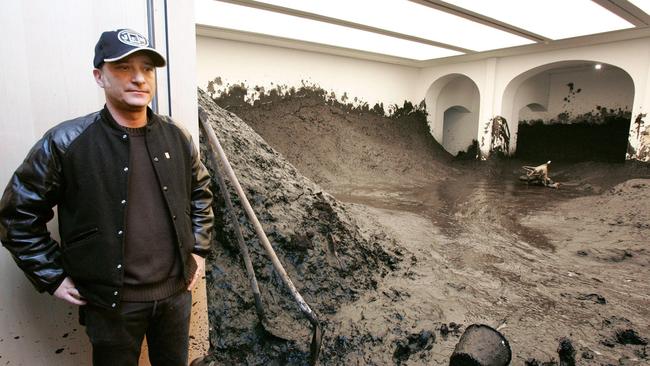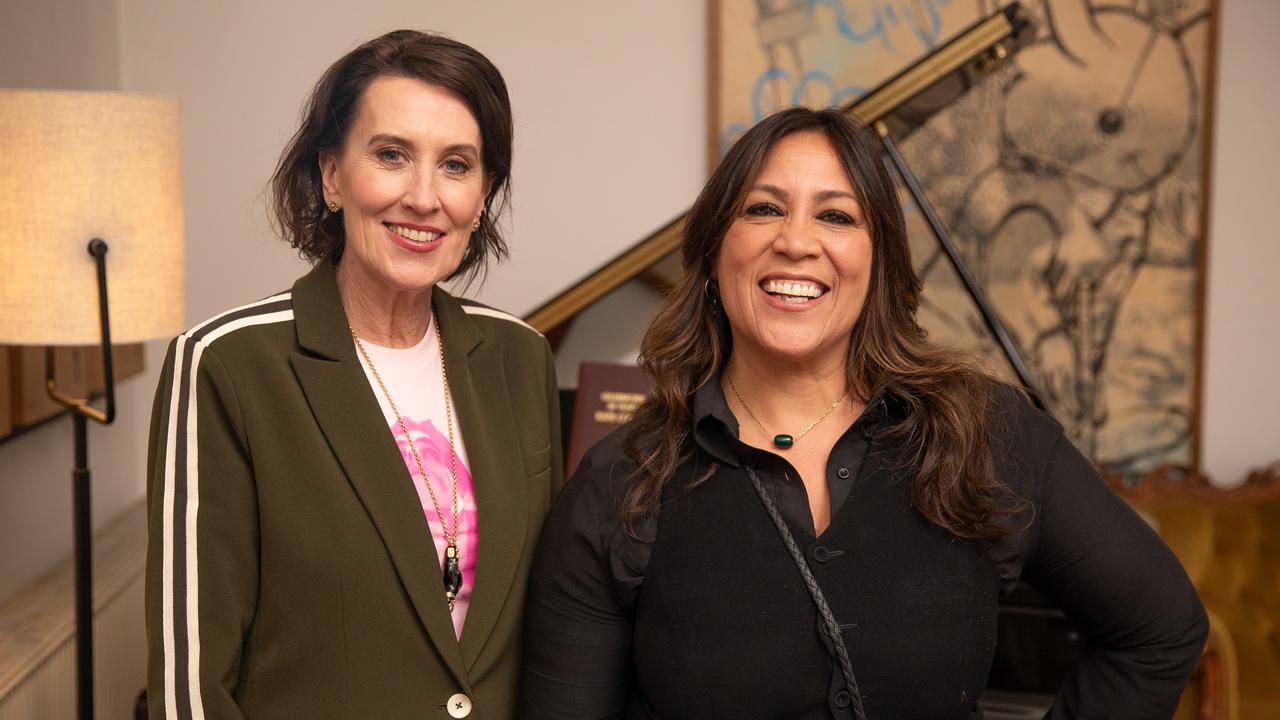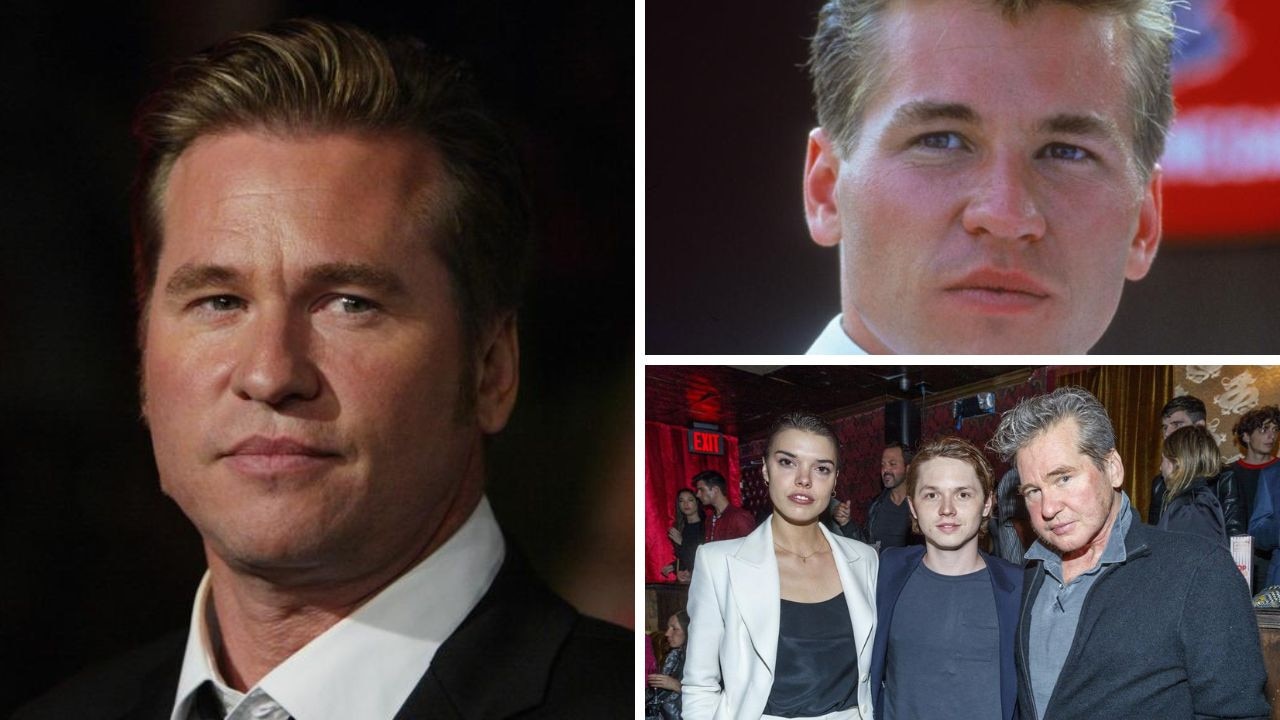Dark Mofo cancels blood-soaked artwork by Santiago Sierra
An exhibition involving the donated blood of Indigenous peoples was condemned as insensitive and arrogant.

David Walsh’s Dark Mofo festival has been forced into a humiliating backdown over a planned exhibition by Spanish artist Santiago Sierra, after fierce opposition to an artwork that asked Indigenous people to donate blood.
The festival on Tuesday cancelled the commissioned artwork, called Union Flag, in which a British flag was to be drenched with the blood of First Nations people from former British colonies.
The unrealised project, intended to be a critique of colonial violence, offended people as being insensitive to Australia’s Indigenous heritage and British heritage.
Indigenous Australians including Perth writer Cass Lynch and Melbourne curator Kimberley Moulton said enough blood had been spilt by Indigenous people.
“To ask First Nations people to give blood to drench a flag re-creates, not critiques, the abhorrent conditions of colonisation,” said Lynch in an article for Overland. Brian Ritchie, the former Violent Femmes bass player who curates the festival’s related summer event, criticised the proposed artwork for being exploitative and “intellectually void”.
The exhibition was cancelled less than 24 hours after Dark Mofo’s creative director, Leigh Carmichael, defended both the project and Sierra’s right as an artist to “self-expression”.
Sierra is in Spain and was not warned in advance that his work was to be cancelled. He told The Australian on Saturday he had chosen the Union Jack because the British were one of the “most destructive empires in history”.
Carmichael said he and Walsh, whose Museum of Old and New Art runs the festival, discussed the project on Tuesday morning and decided it wouldn’t continue.
“We came to the conclusion that the hurt that was going to be caused by pushing on just wasn’t worth it,” Carmichael said.
“It’s as simple as that.”
The midwinter festival has thrived on shock value. Its previous attractions have involved inverted crucifixes, live burial, and even the dismemberment of an animal carcass.
Privately financed by Walsh, who contributes $2.5m, Dark Mofo this year was awarded a $1m grant from a coronavirus recovery package for the arts.
Wesley Enoch, a former director of the Sydney Festival, said Dark Mofo was “happy to court controversy” but at times lacked artistic integrity. “I understand the symbolism,” he said. “I don’t know what the artist was thinking, to be honest. I don’t know what the organisers were thinking.”
He said Union Flag possibly would make more sense if it was the work of an Indigenous Australian, and could have been managed better if more Indigenous people were involved at MONA.
“I’d prefer that David Walsh and the crew there had more Indigenous people,” he said.
“It’s been a discussion about how do local artists, and local Aboriginal artists in particular, get a guernsey in there.”
Wiradjuri artist Brook Andrew, director of the 2020 Biennale of Sydney, said a lack of “duty of care” to Indigenous people, their history and culture was “endemic” across the cultural sector.
Carmichael said he knew Union Flag would be confronting, but he had hoped it would encourage a conversation about violent episodes in Australia’s colonial past, which is what Sierra had intended. He said he didn’t anticipate — out of “naivety, foolishness or whatever” — which way the conversation would turn.
“The shock gives you an opportunity to have a discussion, but sometimes it just runs away and consumes all the oxygen,” Carmichael said. “It did hurt people. It was upsetting, and we are upset by that. It’s not what we intended.”
The controversy may affect the rest of the festival, particularly if artists decide to boycott the midwinter event in June.
“We are not sure what the fallout will be yet,” Carmichael said.
“We made a pretty big error of judgment, and that has consequences. And we will now have to come to terms with that.”
But Michael Mansell, of the Aboriginal Land Council of Tasmania, said he was disappointed Sierra’s artwork wasn’t going ahead. “The Spanish artist was supporting Aboriginal people, and the hidden history of what happened to us; he was not trying to offend us,” he said. “People who complained about the art may have misunderstood the message the artist was hoping to project.”




To join the conversation, please log in. Don't have an account? Register
Join the conversation, you are commenting as Logout